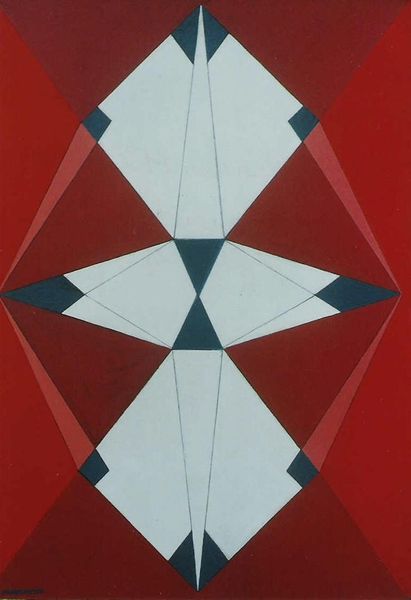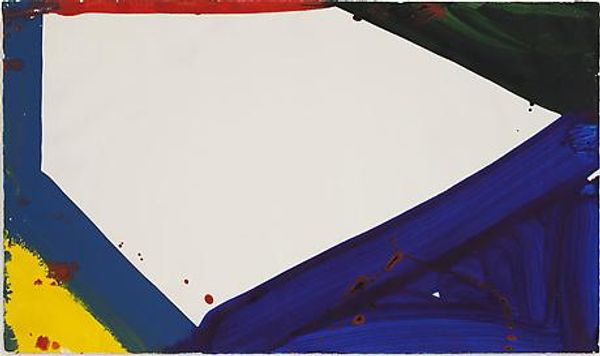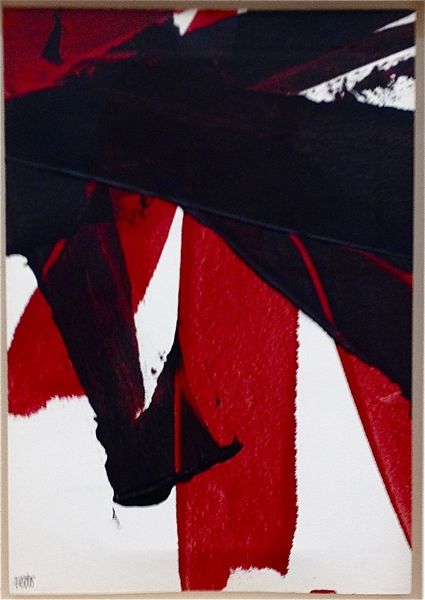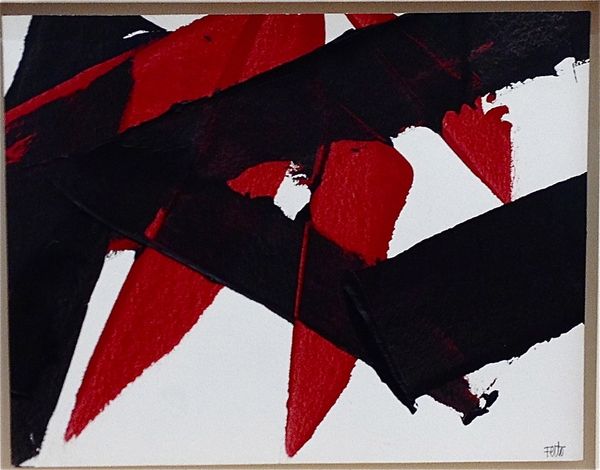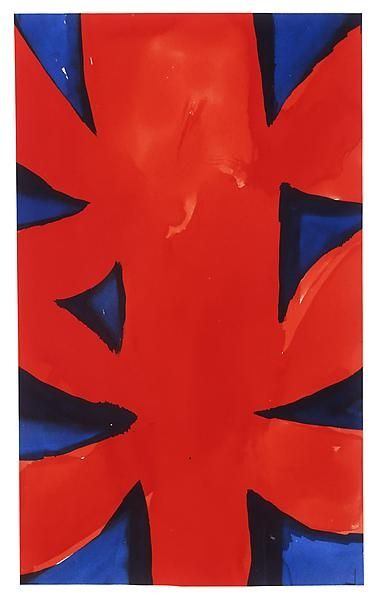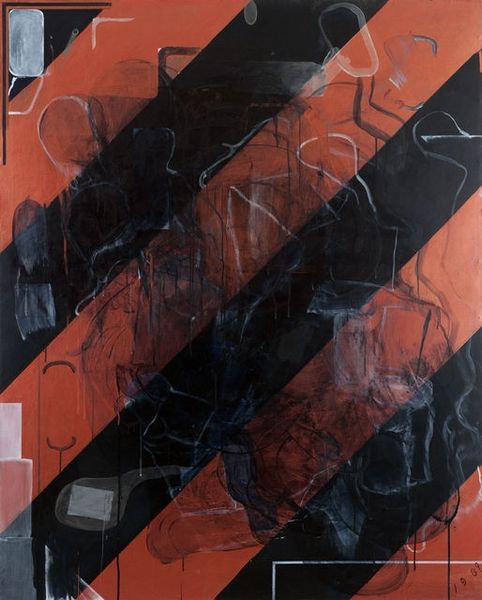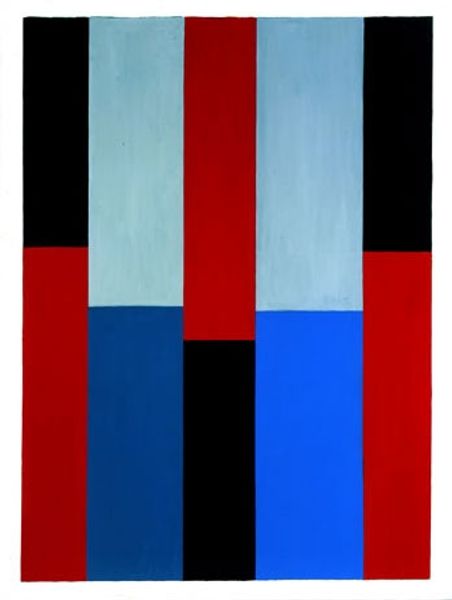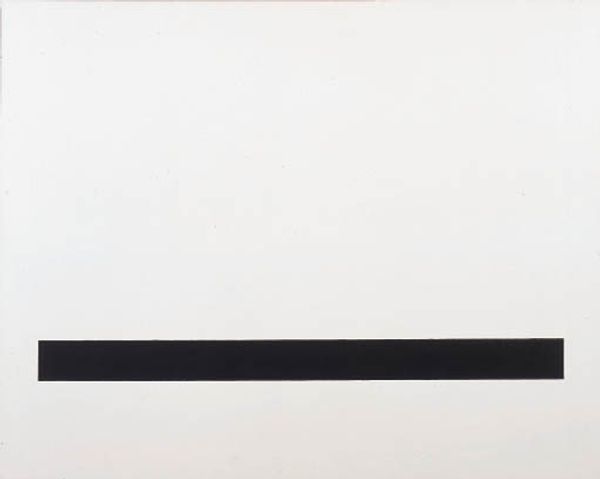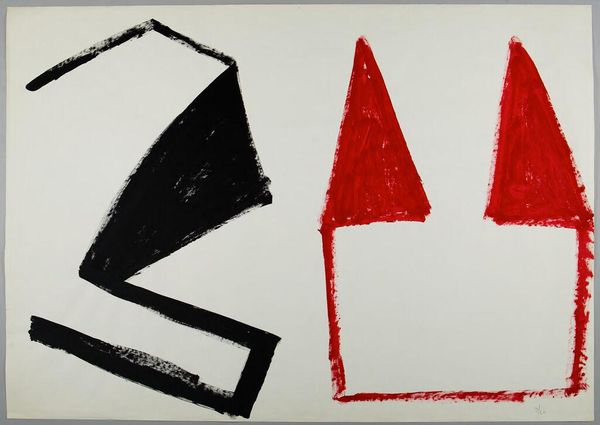
#
washington-colour-school
Copyright: Sam Gilliam,Fair Use
Curator: Sam Gilliam's "Blue Line," dating back to 2004, offers an intriguing interplay of geometric forms executed in acrylic. What are your first impressions? Editor: It's visually striking, no doubt. The prominent red background contrasted with those blue geometric shapes feels assertive, even confrontational. Curator: Indeed. Considering Gilliam's practice and the socio-political landscape he operated within, this composition could be seen as challenging established norms of the art world which often privileged white male perspectives. Geometric abstraction here speaks to breaking down structures of power. Editor: I'm more drawn to how it’s actually made. Look closely – the texture. You can see how Gilliam applied the acrylic paint. He's not hiding the process; the hand of the artist is very present here. The layering and striations really foreground the materiality of paint as labor, each visible mark. Curator: Yes, that focus on the tangible resonates with broader discussions around labor and value in art production. Especially important given the erasure of black artistry from traditional narratives. It highlights Gilliam’s agency in manipulating his chosen medium. Editor: It moves past representation. The blue line itself... what is it, other than itself? It's color, shape, texture. There's no attempt to disguise its construction. That radical commitment to material honesty feels quietly subversive, defying expectations of what painting 'should' be. Curator: And even within the confines of those self-imposed limits, there is dynamism. Consider how the blue lines interrupt the red field, creating an ambiguous relationship between foreground and background. We see similar negotiations in much of Gilliam's wider work. It acts as a destabilization of formal conventions. Editor: Exactly, disrupting, pushing... seeing it through a material lens, it really emphasizes how his choices dismantle old hierarchies of "high" art and "low" craft. Curator: This reframing certainly brings a richer and nuanced understanding. Editor: And acknowledging how materiality can be its own powerful statement is very vital when interpreting abstract forms like these. Thank you! Curator: Thank you. I now find that a new light is shone on my socio-political context due to your contribution of material processes.
Comments
No comments
Be the first to comment and join the conversation on the ultimate creative platform.

